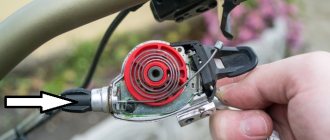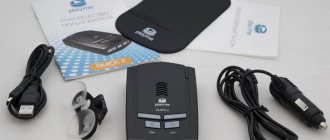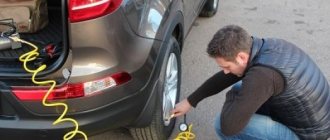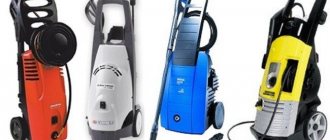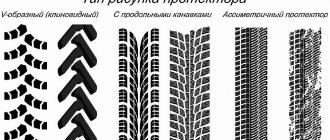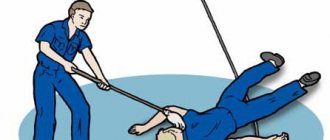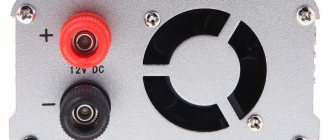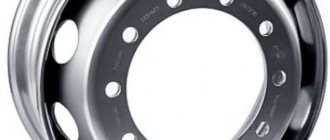Probably everyone has seen at least once how a faulty car is towed to a car service center or to a parking lot. Someone participated in such an operation while driving a faulty car. In any case, every car enthusiast should know what towing a car is, how it happens and what you need to know and be able to do for this. It is no secret to experienced drivers that you must always have a cable with you in your car.
Various towing methods
There are only two methods of operation: with a rigid and with a flexible coupling. The rigid one is just a trailer. There is a metal profile that is hinged to the towbar to allow it to go around corners. A flexible coupling is a soft cable that connects two vehicles.
The first option is suitable for the evacuation of heavy vehicles (trucks, cranes). The second method is for cars and light trucks. The advantages of this option are that to organize such an operation you only need a cable. It is very compact, but imposes limitations due to its safety margin. Flexible coupling is a more common option, and the most important point here is the cable itself. Or rather, its characteristics.
Tow rope length
It is regulated by the Traffic Rules and is 4-6 meters. This length was chosen for a reason. If the cable is too short, the towed vehicle will crash into it from behind when the tractor is braking. An element that is too long may interfere with maneuvering on the road. When turning, the towed vehicle may simply leave the road, and when driving in a straight line, it will tend to yaw along the road. In addition, towing ropes must be equipped with red flags. Instead, you can tie pieces of red rag at regular intervals. While moving, the cable becomes surprisingly invisible. There are often cases when rushed drivers tried to fit in the place of an element that was too long without flags, naturally with disastrous results.
Which tow rope is better?
Sometimes the most seemingly trivial questions can confuse even an experienced motorist. Everyone knows perfectly well that for peace of mind and confidence in the future, the car must be at least minimally equipped. This is even mentioned in the traffic rules. However, things like a fire extinguisher, wheel chock, or first aid kit are looked down upon by many. This also includes the tow rope. Let’s figure it out right now how to choose the right one and what it should be like to tow a particular car.
Content:
Fabric
One of the most common materials for cables. It can be woven from plant materials or synthetics. Under heavy load, such an element does not stretch, but simply breaks. Due to the fact that it is soft (usually made in the form of a flat tape), if it breaks, it will not cause any harm to the car. Another disadvantage is that it absorbs water well. After use, washing and drying are required. It is advisable to store it in a plastic bag. The advantage is that it is very compact - it does not take up much space in the trunk.
Steel
This cable is woven from metal wire and is characterized by increased strength. Unfortunately, this is where its advantages are limited.
When a heavy load exceeds its breaking force, the steel towing cable breaks and can cause damage to the car or surrounding people. In addition, the metal cable is susceptible to corrosion. Therefore, they place increased demands on its storage conditions.
And one more minus - the element bends poorly (if it is thick and durable) and takes up a lot of space in the trunk. Thus, it is worth using it if there are no other options.
What material is better to buy a cable from?
There are two types of cables on sale: fabric and metal. If we talk about steel cable, it is stronger and therefore more reliable. Although a metal cable can withstand significant loads, it also has disadvantages. Due to the fact that such products are too rigid, they can fail at the moment of inertia. In addition, the wires of steel cables begin to rust over time and, as a result, they gradually become unusable. In conclusion, it is worth noting that it is extremely inconvenient to store and takes up a lot of space in the trunk.
But the fabric cable twists perfectly and fits into the corner of the luggage compartment. It is less expensive than metal and is designed for light loads. You should choose a nylon cable very carefully, because often it is not able to withstand the loads specified by the manufacturer. Therefore, when purchasing this device, you need to focus on the manufacturer or pricing policy.
Load size
Maximum load is the second most important parameter of a tow rope. The element should be selected based on the maximum weight of the vehicle. Moreover, you need to be guided by the following rule: the maximum load of the cable should be one and a half (or even better, two) times the weight of the car. For example, if a car weighs 1.5 tons, then the cable should withstand up to 2.5-3 tons. There is a possibility that the driver of a larger car will have to help. As for towing in mud, there are often loads that are three times the weight of the vehicle. After all, there are static and dynamic forces. Towing cables must cope with these peaks - there is no need to be on the safe side here.
Another example of such a load (more precisely, overload) is starting the engine by towing. At the moment the engine starts, the force increases so much that the wheels may stop rotating and the car is actually dragged. The cable must cope with this jerk. Otherwise it will break with a loud bang. The cable can break anywhere - in the middle, at the ends, at the fastening points, in the stitching.
Choosing a reliable tow rope
In this article you will learn everything and even more about tow ropes and shackles. Agree that no one is immune from incidental situations when you gather with friends in the forest and get stuck in a puddle. In this case, it will not be possible to cope with male strength alone, and special devices will come to the rescue.
Many motorists do not want to help, not because they feel sorry, but because it is dangerous. After all, new cables often prepare not very pleasant surprises. Imagine you decided to help, pull, pull and it will fly into the glass. Many people screw something on top for a soft impact. But it’s better to always have a proven cable that will help you in difficult times.
Cable absorber with a weighting agent made of dense textile tape. Some people throw their jackets, but many resort to the help of an extinguisher. If you need to rescue someone from a swamp, then you will probably need a tow rope at a minimum. Ryvkovy definitely won’t do.
Homemade cables. Many people make their own cables. For this, lifting slings are used, and climbing ropes are also a good option. This is certainly a good option, but still, store-bought is much better.
Towing rules. The traffic rules state that the length of the towing rope should not be less than 4 and more than 6 meters. A longer cable will not work, because it will make it difficult to take turns. And what to do when the tug goes around the corner, it probably won’t happen without an accident.
Towing rope "DorNabor" for a car. The length of the cable is five meters. The coupling element is a loop. The load that the device can withstand is 13 tons.
The polyester towing strap can support 4 tons. The coupling element is a hook.
In any case, you need to choose a cable based on the weight of the car. If your car weighs 2 tons, then the cable should at least withstand twice as much. There are only two clutch elements: a loop or a hook. It’s impossible to single out just one thing, because the hinge won’t be able to break anyone’s window, but the hook is very easy to operate.
Dynamic sling 14 t/9m from the Ufa company . Ideal for cars weighing 2.5-3.5 tons. The jerk cable (dynamic) accumulates energy and fires when needed. You need to remember that such a cable is not suitable for towing.
Rigging shackle. This fastening connection is very famous for its properties. Jeepers love it very much. Ideal for those who travel off-road. Easily connects slings, towing eyes, winch hooks, etc.
Bottom line. Surely every motorist already has his own lucky tow rope. And if not, then you know exactly which one you can buy right now in the store. You will also probably be interested in reading the article about 6 items that are necessary for off-road travel.
- Why does the Chinese manufacturer GAC have no chance in Russia?
See all photo news >>
Methods and places of fastening
The simplest mounting option is two loops at the ends. They are simply put on the eyelets. But this option is difficult to install. The best choice is hooks at the ends. They are the most reliable. Hooks are usually equipped with special spring clips. They serve to ensure that the elements themselves do not fly off the lugs during towing. But the most important thing in this design is the place where the ends of the cable are sewn together. You should make sure that it is reliable enough and that at the most critical moment the element will not come off the hook. If the cable is fabric (flat), then the stitching area should be in the form of a square. Additionally, it is stitched crosswise.
Towing elements for SUVs
For off-road cables, loops at the ends are more appropriate to avoid inadvertently damaging the vehicle. For SUVs, the length of the tow rope should be longer: six meters is very little. After all, sometimes a tow truck cannot get close to a stuck person without the risk of getting stuck. Such an element must be soft, not afraid of water, frost, and, in addition, withstand significant overloads. For such conditions, a towing rope of 5 tons or higher is suitable. Such elements are available in specialized stores for SUVs.
Also, instead of a special cable, you can purchase halyards. They come in different diameters and load limits. The halyards are sold by linear metres. It should be borne in mind that such an element when folded will have decent dimensions.
Question three: what should be the length of the car cable?
According to traffic regulations (traffic regulations), the length of the towing rope must be from 4 to 6 meters. This is entirely consistent with sound logic. If the cable is shorter, there is a high probability of a collision between the towed and the towed. If the cable is longer, the distance between the cars will be too large, it will be difficult to make turns, cross intersections, etc.
So, the best tow ropes for cars, SUVs and trucks are:
| Towing ropes for passenger cars | Tow ropes for SUVs |
For trucks
A few words need to be said about the types of towing cables for trucks. In general, they are exactly the same as for passenger cars. The differences are in size, namely in thickness. Of course, steel cables are still held in high esteem, but their age is already over. This is the lot of old-timers who are not embarrassed by broken cable wires digging into their skin. They have been replaced by lightweight and durable synthetic products that can withstand almost any weight.
The types of fastening are also different - loops, hooks and staples. The latter are very easy to use and do not fray the cable. We also note that you need to choose a towing element not according to the curb weight, but the total weight of the truck. For example, if it is a GAZelle, you must purchase a cable designed for a load of at least four tons. The higher the indicator, the better, the main thing is not to rip the hook itself from the frame.
Buy a tow rope
Buying a tow strap is not difficult: car markets and stores offer domestic and imported products, with different characteristics and reviews, for every taste and budget. The main thing is not to fall for a cheap product, but rather to carefully analyze its capabilities and endurance. Remember: your safety and success depend on the quality of the product you choose.
The video shows tests of various cables:
If you don’t yet have a towing strap in the trunk of your car, then go buy one as soon as possible. Just keep in mind: in order to purchase a cable of appropriate quality, you must choose branded products. As car owners assure, such products will last a long time.
The modern market presents a huge number of cables of various modifications, each of which is designed for a specific load, confirmed by tests. If you make a tow rope with your own hands, you can make a mistake with its properties and length in particular, and at the most necessary moment it will simply break. When making a cable yourself, you need to take into account a lot of nuances, as well as assemble and equip it correctly, so if you don’t have certain skills, it’s better not to take on such work. Since such actions can lead to small or big troubles.
Color and manufacturer
Tow ropes for cars should be as bright as possible. In this case, you can do without checkboxes. Such a cable will be clearly visible to other drivers. Also, a bright element will help track its tension. Some cables are equipped with reflective elements, which also makes evacuation safe in the dark. As for the country of origin, nameless options should be immediately discarded. Such cables can fail at the most inopportune moment. Here price often serves as an indicator of quality. Therefore, the miser pays twice.
Care and maintenance
Even such a seemingly unassuming accessory needs care. If the cable is in a bag in the trunk, you need to take it out from time to time, unwind it, and check for breaks. It is advisable to lubricate the hooks at the ends. Even after just one use, they may begin to rust. Prevention will not be superfluous here. Towing cables should not have breaks or cracks, become frayed or have any peeling. Particular attention should be paid to the stitching of the ends near the hook or loops. Fraying of stitches is also unacceptable.
Thus, choosing a tow rope is not a difficult task, provided you have a clear understanding of what is required of it and under what conditions it will be used.

